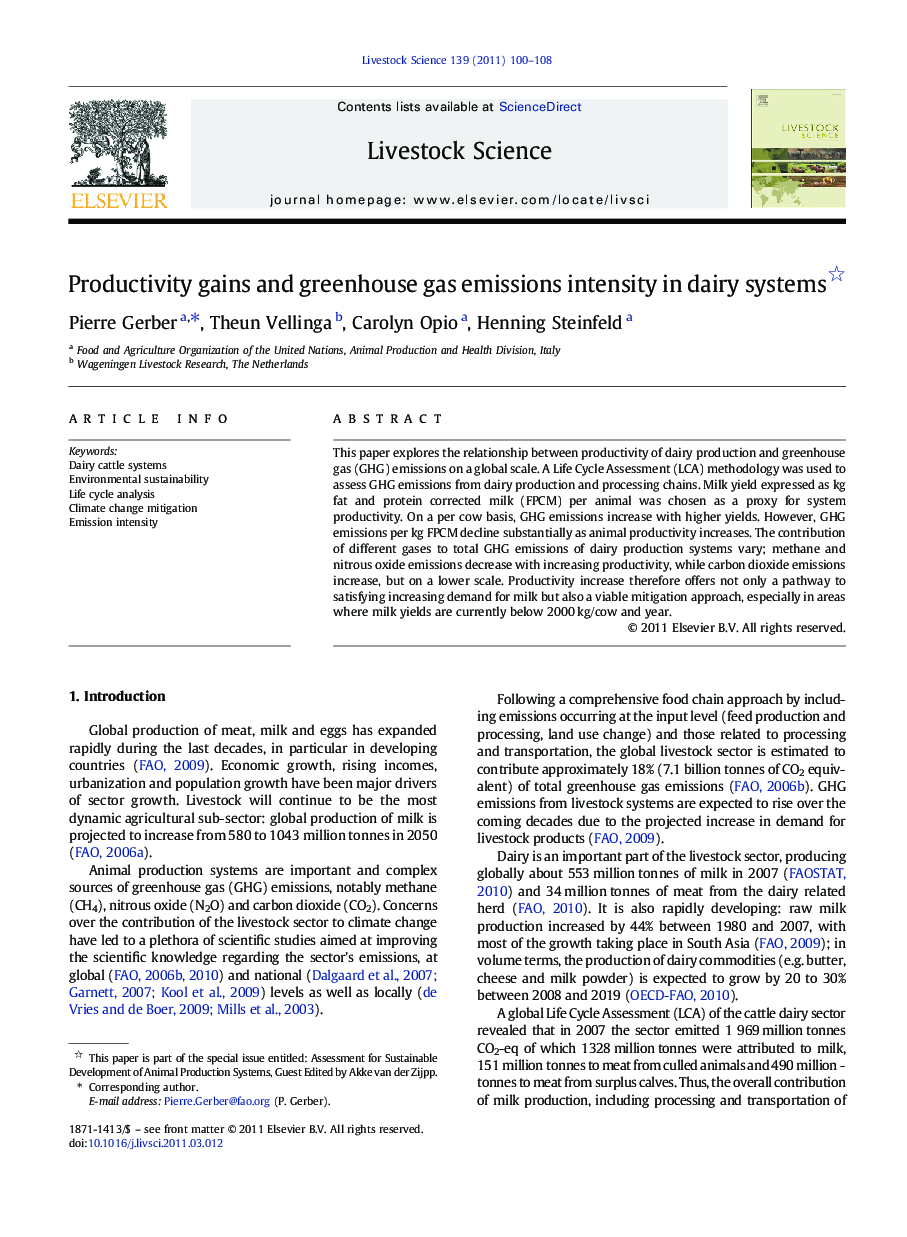| Article ID | Journal | Published Year | Pages | File Type |
|---|---|---|---|---|
| 2447460 | Livestock Science | 2011 | 9 Pages |
This paper explores the relationship between productivity of dairy production and greenhouse gas (GHG) emissions on a global scale. A Life Cycle Assessment (LCA) methodology was used to assess GHG emissions from dairy production and processing chains. Milk yield expressed as kg fat and protein corrected milk (FPCM) per animal was chosen as a proxy for system productivity. On a per cow basis, GHG emissions increase with higher yields. However, GHG emissions per kg FPCM decline substantially as animal productivity increases. The contribution of different gases to total GHG emissions of dairy production systems vary; methane and nitrous oxide emissions decrease with increasing productivity, while carbon dioxide emissions increase, but on a lower scale. Productivity increase therefore offers not only a pathway to satisfying increasing demand for milk but also a viable mitigation approach, especially in areas where milk yields are currently below 2000 kg/cow and year.
